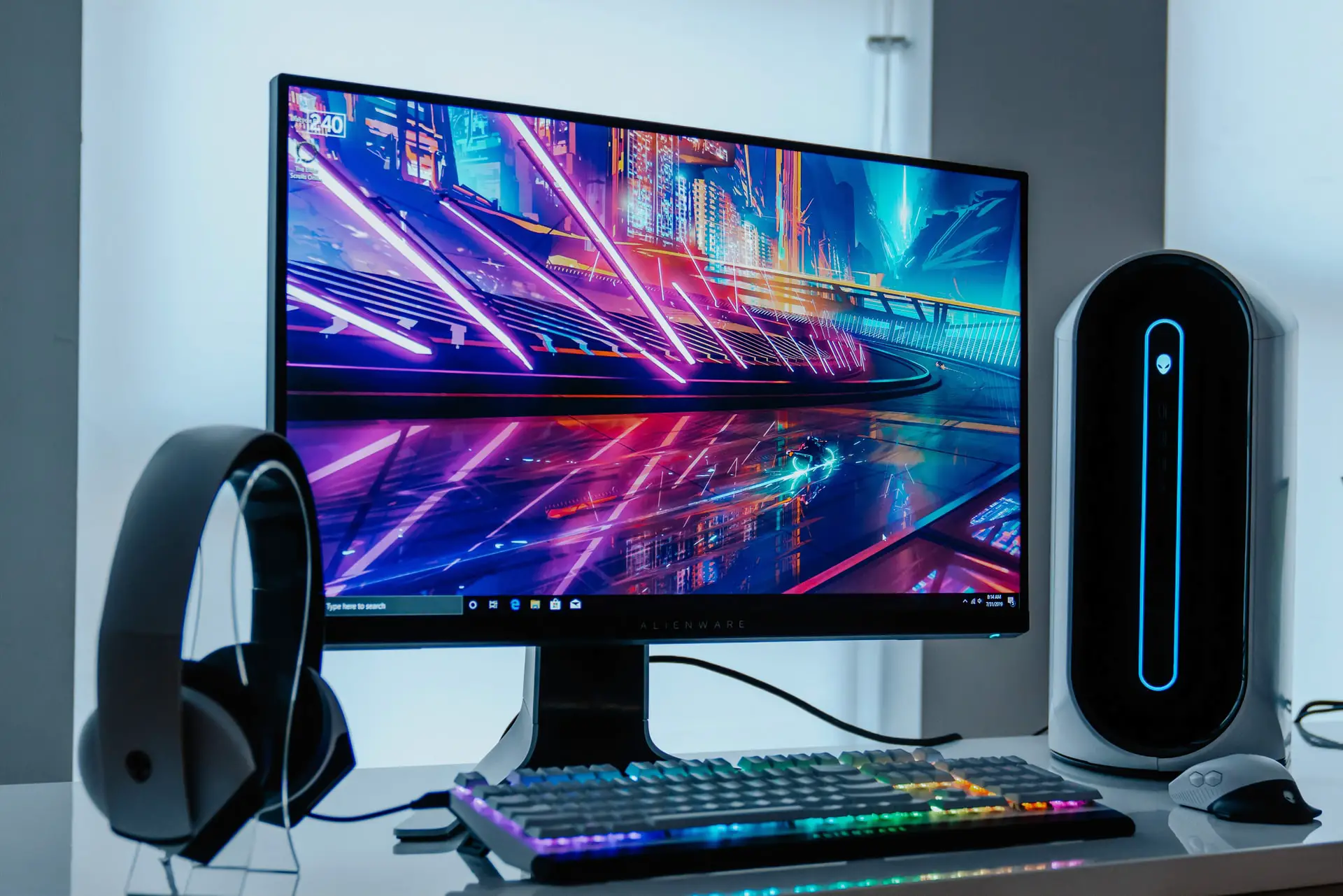Intro
As a writer, you have specific demands for your workstation. A writer spends many hours looking at a computer monitor, so any product claiming to be the best monitor for writing must be easy on the eyes. Having a crisp display is essential. But overpaying for a complicated, high-performance device won’t help you in a job that demands clarity and focus.
Keep reading for a discussion on monitors for writers. We will cover the features that matter, the features you can skip, and a buying guide of the best products available.
Features you should care about
Minimizing eye strain
As a tech writer, I love oversized, 179 degree viewing angle, 4K curved glass displays as much as anyone. But for writers, a monitor that minimizes strain on your eyes should trump everything else.
New products promise “eye saving” features like anti-flicker and blue light filtering, but it is challenging to separate valuable improvements from marketing tactics. There is even an E-ink “paper like” monitor available with a display similar to an E-reader.
Flicker-free monitors are promoted by the manufacturers, but we weren’t able to find any reputable sources discussing benefits. Likewise with blue light filters. And while the E-ink monitors don’t emit any damaging blue light, they are very hard to find, and very expensive at this time.
Conclusion: we just don’t have any strong evidence to prove that the fancy “eye saving” monitors actually save your eyes. So, for now, the best thing you can do is to turn down the brightness setting and take frequent breaks from your computer screen. At the same time, products like the BenQ monitor discussed below draw great user reviews, and many users claim that their eyes are more comfortable when using these “eye saving” products. So we cannot discount these features entirely.
Ergonomics
The best monitor for writers is the monitor that allows you to sit in a neutral, comfortable position. This means that your head is straight forward, your shoulders are square and comfortable, and your arms and elbows are relaxed.
The worst thing you can do is use a laptop with no accessory monitor or mouse. This forces you to bend your neck forward, because the screen is too low. It also forces you to raise your hands too high to type on the keyboard. And the mouse should be offset to your dominant side, rather than a trackpad right in the middle of your keyboard.
The key feature for an ergonomic monitor is the stand. It should be fully adjustable, and allow for tilt, swivel, and height changes. But a desk of the proper size and height is also needed. There are laptop stands that allow you to put your laptop in a more ergonomic position, and there are a number of gadgets and devices that aim to improve your posture at the computer. Standing desks are an example.
Just remember that the important element in ergonomic computer usage is having your body in a relaxed, neutral, and symmetrical position.
Functionality & ease of use
If you are going to spend some money to improve your computer workstation, a multiple monitor setup is the best place to start.
I have previously stated that a dual-monitor workstation with two 1080p monitors makes more sense than a single-monitor workstation with a 4K monitor. And that is especially true for writers.
A display with multiple monitors makes life easier for a writer. With one monitor dedicated to writing, you can use an additional monitor for research and gathering reference material.
You may also wish to experiment with a vertical monitor. This will allow you to see more lines of text — a clear benefit for a writer. A vertical monitor decreases the amount of up/down scrolling needed, which can be a lifesaver when your word count exceeds 10,000. The vertical orientation also saves desk space. This can be helpful if you also use a notepad as part of your writing process.
Functionality also means not wasting time or money on features that provide no benefit. The best monitor for a writer, in my opinion, is “plug and play.” So, you shouldn’t need to adjust a lot of settings or spend time figuring out complicated features.
Reliability & warranty
The importance of a reliable monitor is obvious.
Generally speaking, we recommend avoiding products from unrecognizable brands. While we can certainly find flaws with HP and Samsung products, at least you know they will be around in 2 years to honor a warranty.
Common causes of monitor failure include cracked screens, dead pixels, unresponsive buttons, and periodic shutoffs. Be aware that almost all manufacturers provide a limited warranty on their products. This means that they will cover a clear manufacturing defect, like a monitor that won’t turn on. However, they are unlikely to cover a cracked screen, or anything else the manufacturer can blame on user-caused damage.
With a little research, you can find a monitor with a 2 or 3 year manufacturer warranty. A 2 year warranty should be an absolute minimum — if a brand can only guarantee their product for 90 days, find a different monitor to buy. And again, keep in mind that the warranty is only as good as the company that guarantees it.
While you can usually buy an extended warranty at the time of purchase, you might be able to save money by price-shopping warranty services like Upsie or SquareTrade.
Features you shouldn’t lose sleep over
Built-in speakers
Generally speaking, built-in speakers are junk. Sure, some monitors include adequate speakers at a premium price. But if sound quality actually matters to you, spend the money on a set of quality external speakers.
Refresh rate
Refresh rate is crucial for gamers, streamers, and people that plan to watch movies on their computer. But for a writer, spending big money for an ultra-fast refresh rate doesn’t provide much value. If you want to spend $600+ on a monitor with a 240 Hz or 360 Hz refresh rate, you certainly can. But you probably won’t see the difference using a word processor.
Color accuracy and premium visuals
Photo and video editors will certainly need a monitor with great color accuracy. For a writer, again, this feature just doesnt provide much impact.
Best Monitor for Writing – Our Top 3 Picks
We love this choice for being versatile yet simple, and budget friendly. The screen is almost 24”, and can be used either in landscape or portrait (vertical) orientation. Tilting and adjusting the monitor is easy, and it is compatible with VESA mounting. The display is 1080p and has built-in speakers with adequate quality. Other than the vertical monitor feature, there is nothing spectacular about this device. But the monitor does everything well, at a great price.
This monitor offers a larger, higher definition screen than the HP discussed above. The 27” UHD display looks and performs great. The price is great considering all the premium features you get. And the biggest advantage to this product is the stand, which allows for movement in every direction. So, in addition to a high quality, oversized display, this monitor can be adjusted to any position imaginable.
BenQ markets this monitor for its eye saving technology. This includes adaptive brightness, flicker-free display, and “proprietary eye-care tech.” While we love this monitor, both for the design and the picture quality, some of the “eye saving technology” seems like marketing speak. So, even though we won’t give the eye saving technology a full endorsement, it is nonetheless an excellent monitor that scores high marks for user satisfaction.
Final thoughts
The best monitor for writing needs to be:
- Easy on the eyes
- Adjustable, to save your posture
- Simple to use, without unnecessary (or expensive) features
- Reliable & with a warranty
As a writer, there are some features that are important, and others that are just a waste of money. Don’t fall for gimmicks or marketing, and you should be able to find a great product for $300 or less.





